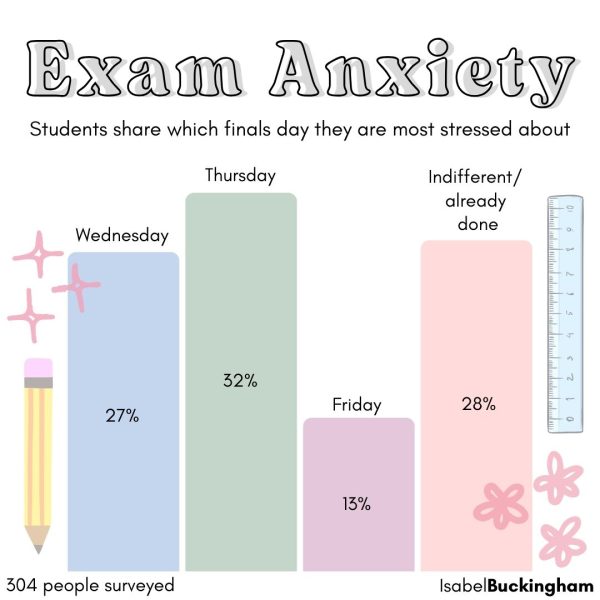Students learn how to cope with diabetes
At a young age, children don’t think much about what they are eating; they just take what seems the most delicious and run with it. Their faces are stuffed with sugary sweets like lollipops, chocolates, bubblegum, cookies and other candies. But for some children, they can only stand back and watch as their friends devour their food without a care in the world.
Type 1 diabetes is usually diagnosed in children and young adults all across the nation. This is when the beta-cells in the pancreas almost or completely stop producing insulin. Insulin is a hormone that helps break down sugars, starches and other food into energy for everyday life. The lack of insulin leads to increased blood sugar and urine levels, therefore children have to monitor the nutrition value of their food intake daily. Being diagnosed puts major complications on a child and his or her family’s life.
Sophomore MaKenna Petersen enjoys playing basketball, being a part of the color guard and hanging out with her friends, but it hasn’t always been easy. Petersen was diagnosed with type 1 diabetes when she was 9 years old on May 25, 2010.
“Whenever I first found out, I was scared,” Petersen said. “I had a friend who died from it. She had undiagnosed type 1 diabetes, and whenever I got diagnosed with type 1, I was afraid of dying.”
Petersen and her family struggled in the beginning with counting carbs for everything she ate, but over the years, she said it has become increasingly easier for them. Ever since Petersen was first diagnosed, her family has been able to adjust to every hardship. Petersen and her family had to dramatically change their lifestyle to fit her needs, which ultimately ended with little to no sugary foods due to the constant spikes in blood sugar these particular foods caused.
Peterson’s new lifestyle was a tough transition. In the beginning, she was required to take shots of insulin before every meal so that food would process into energy correctly. Petersen often found herself shaky and often had dizzy spells whenever her blood sugar was low. Whenever her blood sugar was spiking, she often had extreme stomach aches.
When Petersen is playing sports, she always has to check her blood pressure before, after and during halftime to make sure she isn’t pushing herself too hard to where her blood pressure is too low or too high. Other than this, she hasn’t been forced to give up anything she loves to do in her free time because of this disease.
In 2011, Petersen was part of a local walk called “Walk to Cure Diabetes” to raise money and support awareness for this who struggle with the same disease. Her and her family made T-shirts, set up a tent for their team and walked several laps around Town Center, all while raising awareness.
“It’s good to know that other people have the same struggles,” Petersen said. “But, to know that they also got through it, too. It’s nice to know that other people know what I’m going through.”
Petersen isn’t the only student struggling with this disease. Sophomore Justin Wright follows alongside Petersen, and he was diagnosed when he was 15 years old on July 4, 2015. He enjoys spending his time playing basketball and baseball with his friends as well as for leagues outside of school.
“When I found out, I was tired and sick to my stomach,” Wright said. “I’m really shaky and dizzy when I have low blood sugar and I can’t focus straight. When my blood sugar is high, I find myself extremely tired and sleeping a lot.”
One of the biggest challenges Wright faces is what food he is still able to eat. Going out to dinner with his family and friends has become a struggle because he has to count all the carbs and search particular foods online for their nutritional value. On top of that, Wright has celiac disease and has to look for gluten-free foods to help control his blood sugar. Celiac disease is the immune system’s reaction to eating gluten, which is a protein found in wheat, barley and rye, according to celiac.org. Common symptoms found in teenagers are delayed puberty, growth problems, weight loss, irritability and mouth sores. Some patients with celiac disease won’t have any symptoms of the disease because their intestine is still able to absorb a large amount of nutrients and prevent the symptoms.
Wright is set to receive an insulin pump soon to help stabilize his blood sugar after meals. As for right now, Wright is still set on using syringes and pens, which help with injecting the right amount of units of insulin he needs before meals.
After being diagnosed, Wright has discovered that he is not able to enjoy many foods because they spike his blood sugar, such as sugary sweets and, particularly, cereal.
Playing the sports he loves is another challenge he faces. Before and after every game and sometimes even during a game, Wright has to check his blood pressure to make sure it has not gone over his physical limits. It has been two months since he was diagnosed, but Wright has been able to overcome his every day struggles with this disease.
“Diabetes is not a life ruined,” Wright said. “It’s a life changer.”










